What Hi-Fi? Verdict
Partner the Triangle Magellan Duetto 40th well and they are capable of a thrilling presentation
Pros
- +
Impressive dynamic expression and agility
- +
Surefooted with rhythms
- +
Taut and tuneful bass
Cons
- -
Lack a little sonic refinement
- -
Need careful partnering
Why you can trust What Hi-Fi?
Everyone likes an anniversary. To mark its 40th year, French speaker brand Triangle has introduced a number of special models to celebrate the occasion. The Duetto 40th is the smallest model from the company’s high-end Magellan range, but these stereo speakers still pack in a full dose of the company’s range of technologies.
Build & Design
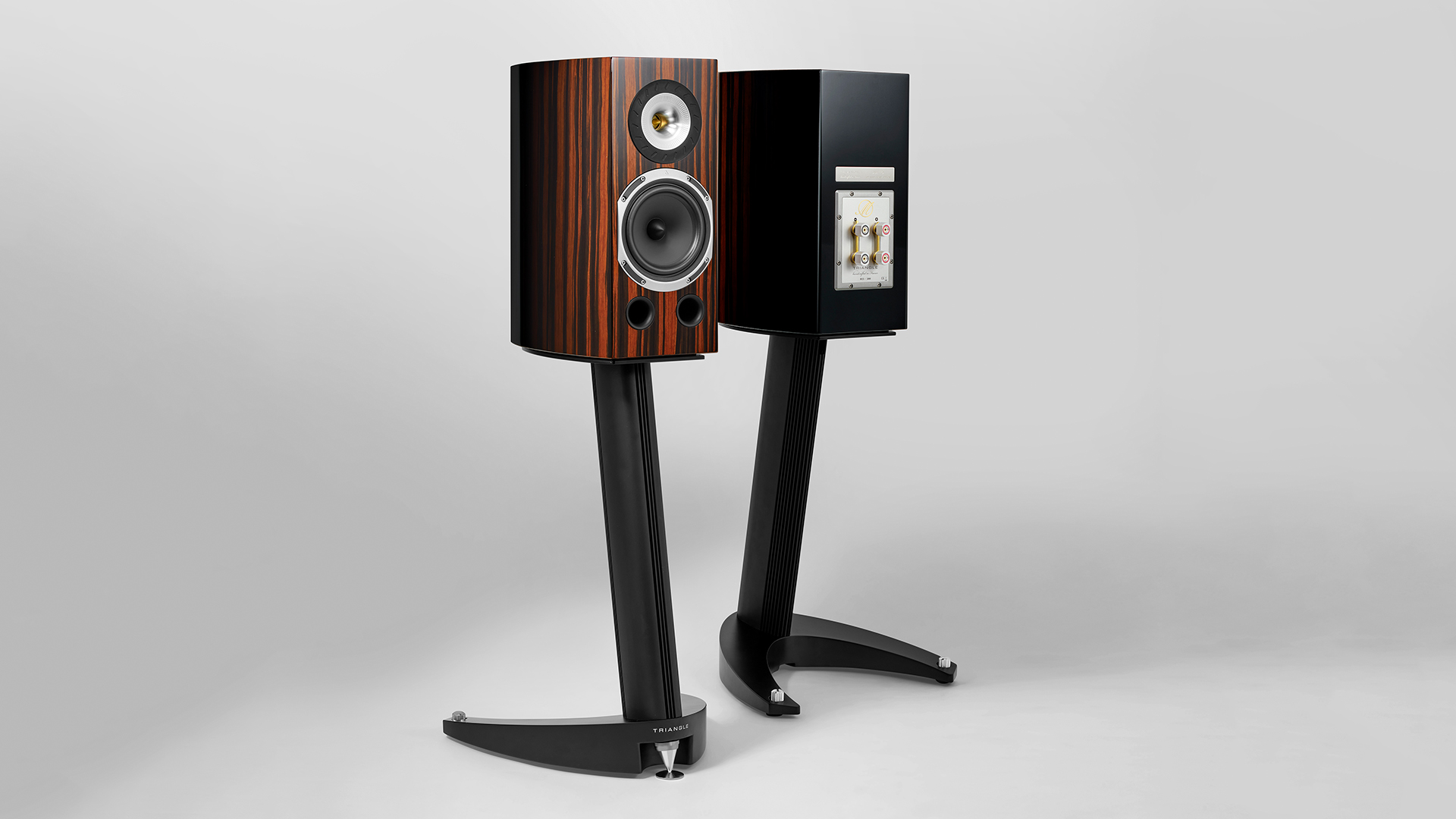
This is a two-way standmount design with a pair of front-mounted reflex ports to augment the speaker’s low-frequency output. A sensitivity of 88dB and a nominal impedance of 8 ohms (with a minimum of 4.6 ohms) is pretty much par for the course. But look behind this set of conventional numbers and you’ll find something of a maverick design that offers a distinctive performance with plenty of charm.
The tweeter is the first clue that this is no ordinary product. It is the ultimate expression of Triangle’s long-running love affair with horn-loaded designs. Normally manufacturers, or their marketing department at least, try to come up with a catchy name, but in this case, Triangle has stuck with the rather drab TZ2900PM-MG.
Those uninspiring letters and numbers do no justice to a distinctive and nicely engineered unit that seeks to improve efficiency, control dispersion and reduce distortion. The central pointy phase plug draws all the attention, but great care is also taken behind the 25mm magnesium alloy dome to ensure that the rear-radiating sound doesn’t impact the unit’s clarity and transparency.
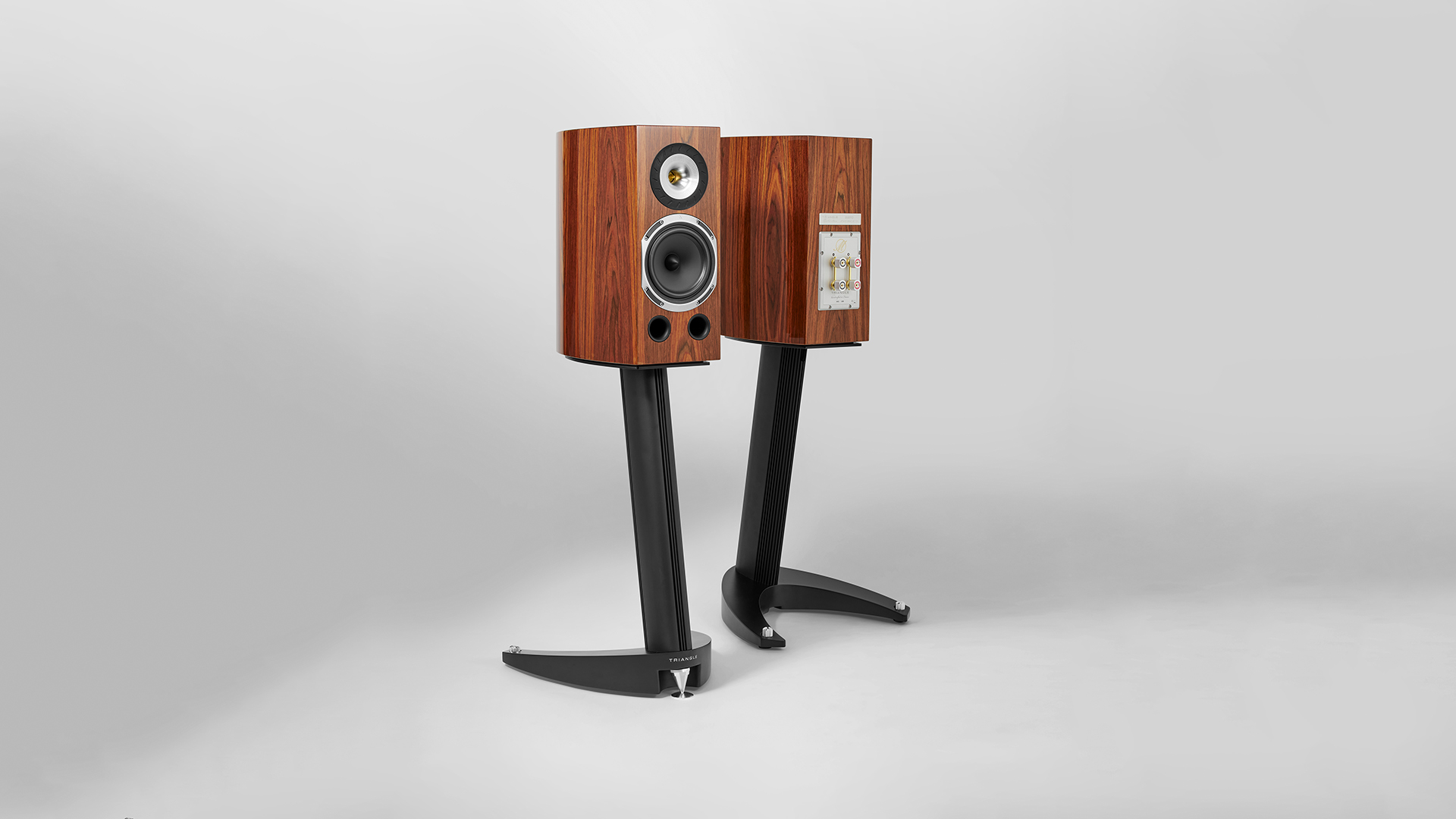
Type Two-way standmounter
Reflex ports Two, front firing
Tweeter Horn-loaded 25mm magnesium alloy dome
Mid/bass unit 16.5cm paper cone
Sensitivity 88dB/W/m
Impedance 8 ohms (4.6 ohm minimum)
Dimensions (hwd) 46 x 25 x 35cm
Weight 16.8kg
The 16.5cm mid/bass unit (called the T16GM-MT10-GC1-V2, in case you wondered) is similarly unusual with its carefully-profiled paper cone and light polypropylene dust cap. This is a driver designed to produce high output levels, low distortion and dynamic peaks without compressing. To that end, much care is taken over the motor system and thermal cooling, along with having a rigid, open chassis design. The two drive units crossover at 3.1kHz; the filter network works at a relatively steep 24dB/octave.
At this level we have every right to expect top-class build and finish. For the most part, the Duetto 40th oblige. They have sturdy curved cabinets made of multiple 3mm layers of high-density fibreboard, which is braced at strategic points for increased rigidity. You have a choice of deep gloss finishes – Golden Oak, Zebrano and Space Black – and they all look suitably luxurious.
We like the thick metal terminal plate on the back panel and the chunky bi-wire multi-way connectors that sit on it. Judged by the highest standards, the finish around the two front-facing ports could be neater, but that aside there is little else to complain about.
Compatibility
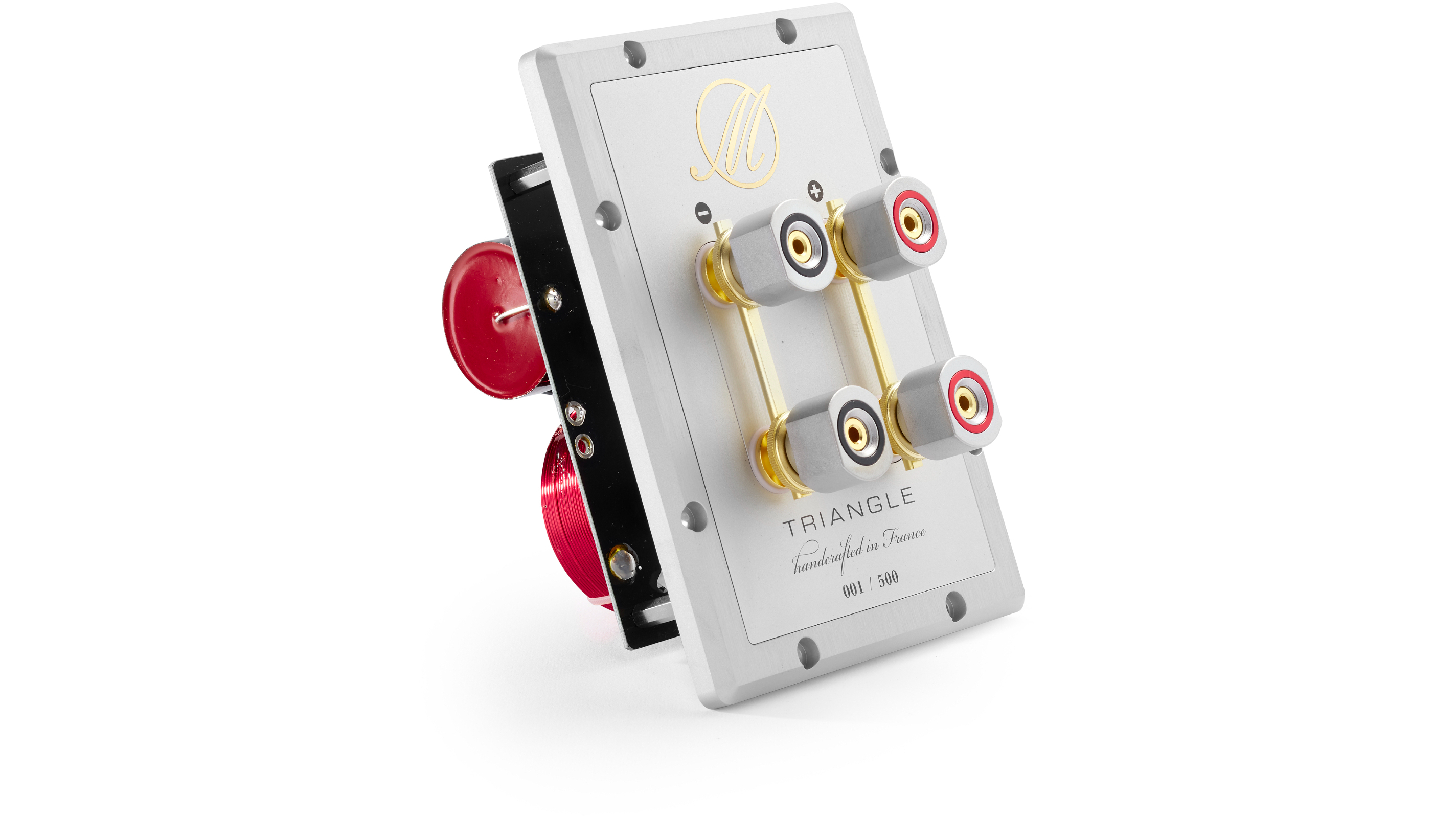
The Duetto 40th are a bit of a mixed bag when it comes to compatibility. They are relatively easygoing when it comes to the room and placement. Triangle specifies that they work best in spaces that are 30 metres squared in area. Given that kind of room, and placed around 0.5 to 1.0 metres from the rear wall, you’ll get a well-balanced sound.
Ideally, you should position the speakers well away from the side walls too, in order to maximise their capable stereo imaging. Do this and they generate an expansive presentation that locates instruments and sounds in a precise and stable way. The claims around the tweeter’s dispersion ring true as the Duetto 40th don’t prove particularly fussy over exact angling towards the listening position.
Things are a little more demanding when it comes to partnering equipment. Triangle speakers tend to be energetic and direct in the way they present music, and the Duetto 40th are no different. That horn-loaded tweeter design has many strengths but it isn’t as refined, sweet or as pure sounding as many of the high-end alternatives. The result is that these speakers aren’t particularly forgiving of aggressive recordings or brighter-sounding electronics.
Our reference system works well though. The main sources are Naim’s ND555/555 PS DR music streamer and the Technics SL-1000R/Kiseki Purpleheart record player. These feed our usual Burmester 088/911MkIII amplifier, though we also swap in Naim’s SuperNait 3 to hear how the Duetto deal with more modest electronics.
Triangle makes partnering stands for these speakers, but at around £1000 / $1499 / $2300 they aren’t cheap. There are plenty of good alternatives to try at that level, so it is worth talking to the supplying dealer for their recommendation.
Sound
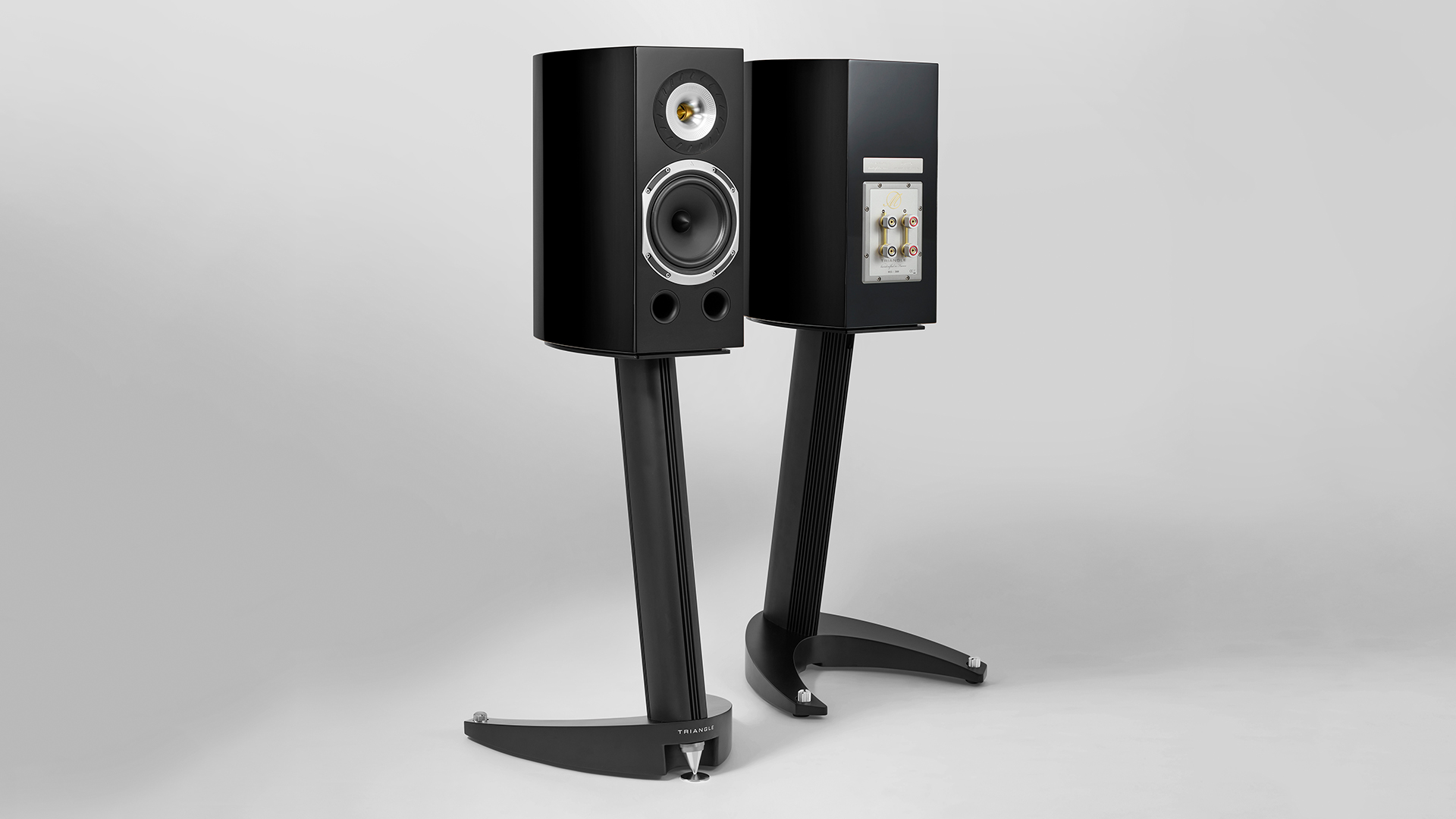
Don’t judge these speakers until they’ve had the best part of a week to run-in. Initially, they sound overly bright, hard-edged and forward, but that settles down to something more even given time. Even then, these Triangles don’t rate highly if you value tonal neutrality and transparency over all else. They have a little too much character for that.
Triangle speakers tend to be fast and punchy, and the Duetto 40th follow suit. Feed the speakers Jay Z’s Blueprint 3 set and they will have a party. These are exciting, front-footed performers that grab the listener and take them straight into the middle of the action. It helps that they deliver the rhythmic drive of tracks like Run This Town brilliantly, and render dynamic shifts with enthusiasm. The midrange is crisp and clear, with Rihanna’s contribution coming through with all the passion and attitude intact. Sure, ideally we would like a little more natural warmth and richness through the midrange and highs, but then the speaker's agility and articulation in these areas would probably suffer.
Bass notes come through with power and punch. These Triangles don’t quite match the class leaders when it comes to low-end reach and muscularity, but what they produce still sounds balanced. Pleasingly, it is taut and tuneful too.
We switch to Beethoven’s 5th Symphony and the Duetto 40th continue to shine. They generate a sound of impressive scale and a solid amount of authority given their size. We’re taken by their dynamic reach and ability to stretch from quiet to loud so fluidly. There’s a good level of insight, with the speaker digging up plenty of detail and managing to organise that information in a musically compelling way. These are speakers that want you to get swept along with the music rather than sit back and analyse the recording or production.
Verdict
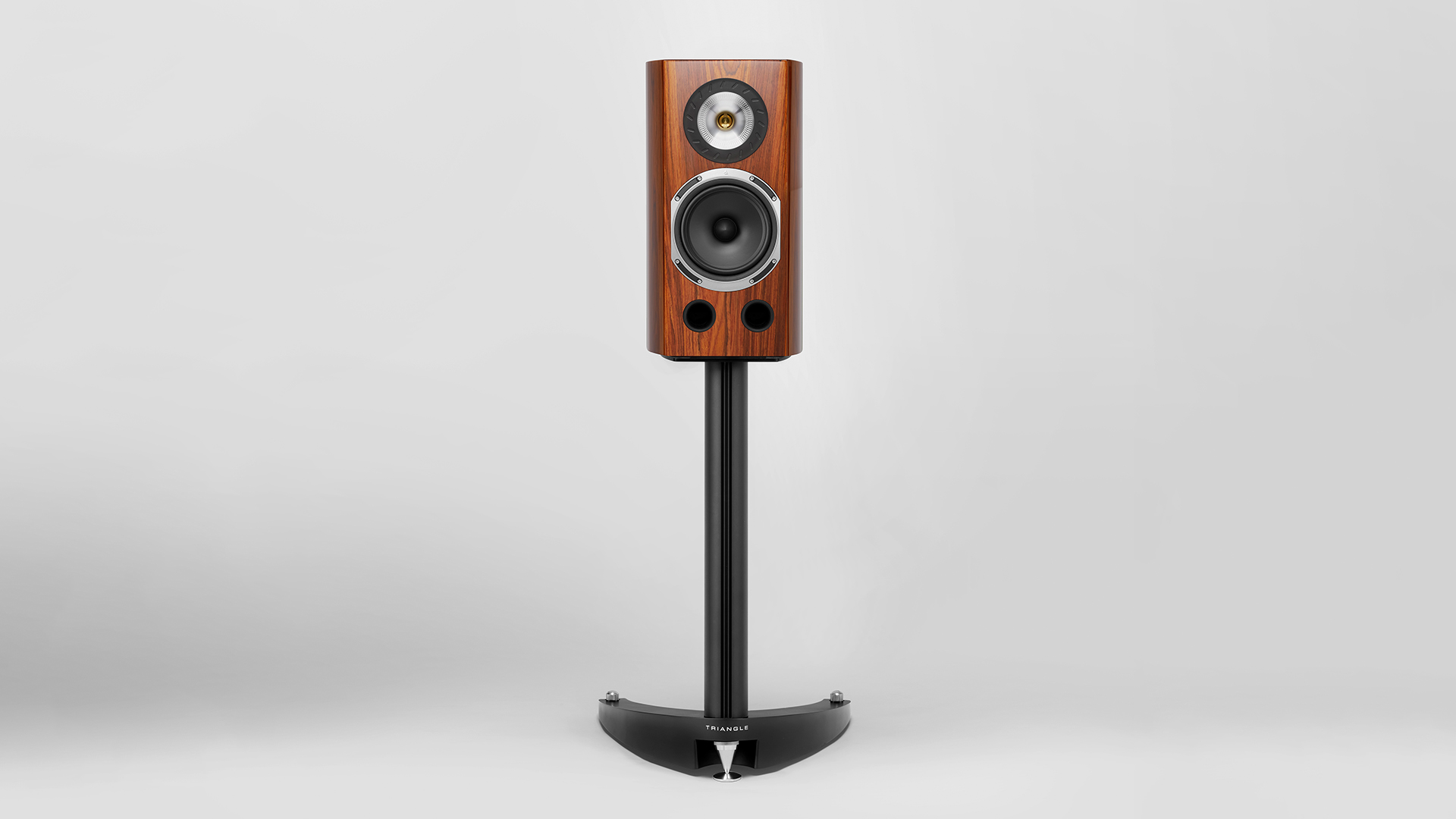
At this level there is no shortage of alternatives that specialise in uncovering every last detail in a recording. It’s much rarer to find anything that makes listening to that music so much of a thrill.
The Triangle Duetto 40th anniversary speakers may not be one of the best all-rounders in this class, but they certainly offer one of the most entertaining listens. Just remember to partner with care.
SCORES
- Sound 4
- Build 4
- Compatibility 4
MORE:
Read our review of the ProAc K1
Also consider the Fyne Audio F1-8
What Hi-Fi?, founded in 1976, is the world's leading independent guide to buying and owning hi-fi and home entertainment products. Our comprehensive tests help you buy the very best for your money, with our advice sections giving you step-by-step information on how to get even more from your music and movies. Everything is tested by our dedicated team of in-house reviewers in our custom-built test rooms in London, Reading and Bath. Our coveted five-star rating and Awards are recognised all over the world as the ultimate seal of approval, so you can buy with absolute confidence.

